
By Mx Kris Vyas-Myall
When reading my morning paper, it can feel like the whole world is determined to blow itself up.
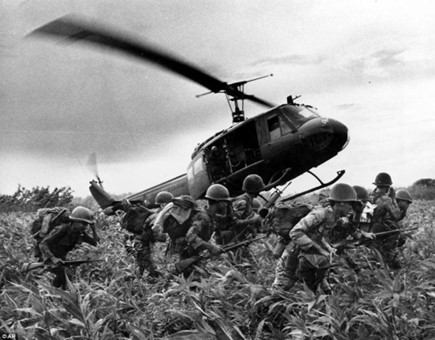
Vietnamese peace talks are going nowhere, with American “help” possibly reaching its nadir when a US helicopter killed friendly South Vietnamese forces by mistake. Israel is once again fighting its Arab neighbours with both Communists and Capitalist countries pouring in military aid to their favoured sides. There is not even goodwill within their respective camps, with the Soviets and Communist China continuing to sabre rattle over the border. And this doesn’t even count the civil wars going on in places like Rhodesia.
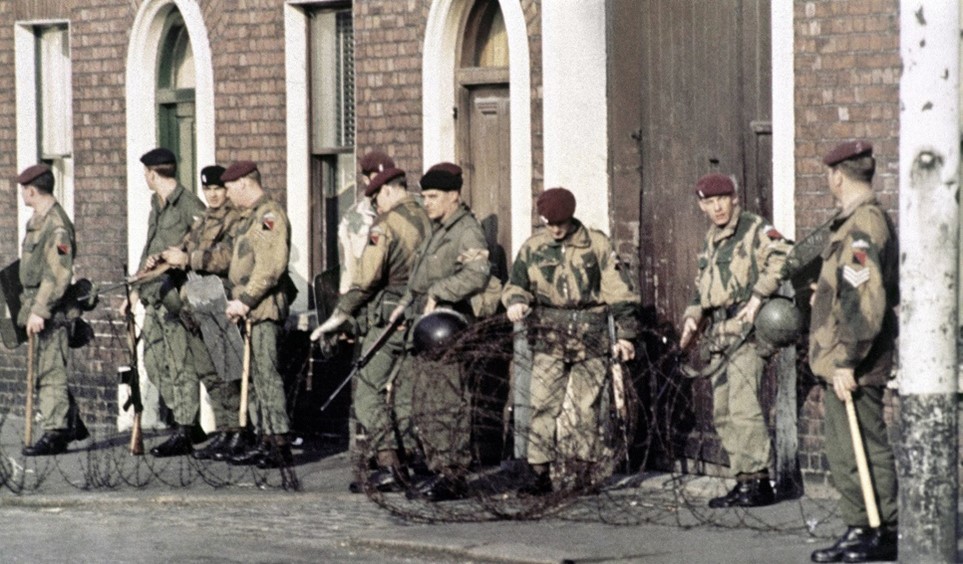
Closer to home, British troops in Northern Ireland’s attempts to keep the peace so far seem to be counter-productive. Whilst we are also learning more of the atrocities committed by British troops during the so-called “Malayan Emergency” from the official enquiry.
With all this violence going on, it makes you wonder if there could be another way. Well Peter Watkins has come up with one, albeit not necessarily the most pleasant option:
Peace in Our Time
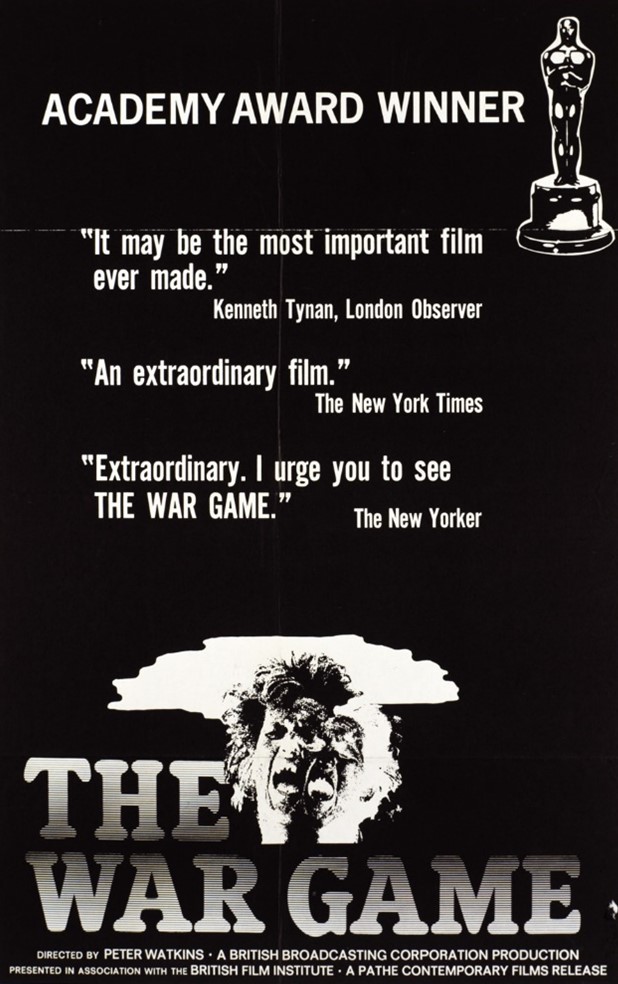
Even if it only got a limited film-run instead of the planned television broadcast, Peter Watkins’ The War Game still had a massive impact on British popular culture. As well as getting a Galactic Star, it won both a BAFTA and an Academy Award. At the same time, it gave a big shot in the arm to the peace movement.
One interesting crystallization of that can be seen in an interview with John Lennon on his Bed In for Peace:
a letter we got from a guy called Peter Watkins who made a film called The War Game. It was a very long letter stating just what's happening – how the media is really controlled, how it's all run, and everything else that people really know deep down. He said 'People in your position have a responsibility to use the media for world peace'.
It seems he was already thinking about putting these ideas on film, because this is really going to form the basis of his pseudo-sequel to The War Game, The Peace Game (called The Gladiators in some other countries).
Year of the Peace Olympics

Not long-ago, the United Nations and Communist Countries agreed to the creation of The International Peace Games, based on the gladiatorial combat of Ancient Rome. In doing so they would divert the natural aggressive nature of humanity and ensure the survival of the human race.
Ten participants are chosen for each side, all young people in their twenties. The actual game we see has a simple format. The Western team has two hours to capture the control room, which leads to their instant victory. The red team have to stop them, getting rid of all opponents, by any means they so choose, which leads to their instant victory. If neither is completed in the two hours, points are awarded based on “strength” (e.g. taking prisoners) and deducted for “weakness” (e.g. hesitation). They are even given paths of different difficulty they can choose to take, as if they are on a ski slope.
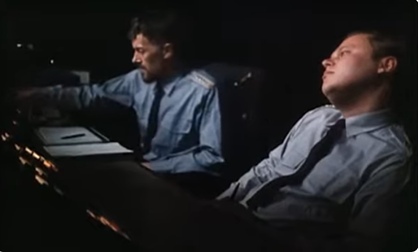
Today’s Peace Game, #256 in the current series, is played in a castle near Stockholm. It seems to be being held between USSR, Communist China, East Germany and North Vietnam on the one side, and UK, France, West Germany & USA on the other. (There are Nigerian and Indian generals present but they appear to be there purely as observers).
This is not just a private affair between the participants involved. It has in fact become the most popular programme on television in NATO countries. This is broadcast for 2 hours on a Saturday in a regular slot, so they need to work on a schedule to keep the sponsors happy. Remember this point, as it is going to be important for understanding what happens later.
Let the games begin
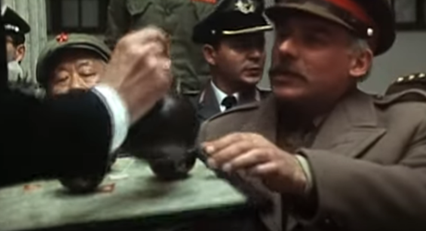
It opens in Peter Watkins’ documentarian style, with musicless shots of little details of the various scenes. Generals walk to the ceremony silently, whilst the soldiers are interviewed about the game. We hear different people talking about the different reasons they come here. Volunteers and draftees. True believers and those without purpose.
Right from the start, we are encouraged to see the gap between the generals and controllers, and the ordinary people forced to participate in the system. The twenty-something soldiers are all sitting in the cold, whilst old generals are in a mansion in good spirits sipping tea and joking with their opposite numbers. As the Western team hides in a hole from an artillery barrage, one general says to another, "We will be able to enjoy ourselves like chess players, no matter the outcome".
In fact, it goes even further. If things get boring the generals can start to fire artillery on their own teams to get them moving. And whilst the teams have phones to call up support, these are only dummy phones and do not connect at all.
There is also a third player in all of this. The Machine. This is a giant computer, which analyzes and awards points throughout the game. Yet there seems a kind of masochistic nature to it. When ordered to put in more violence it thanks the generals for it. In addition, it constantly broadcasts a signal beyond human hearing, to increase the pressure on the participants.
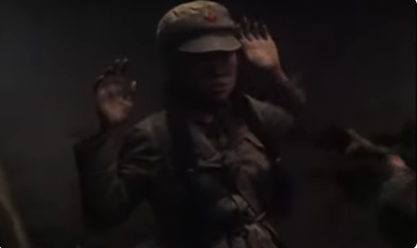
We predominantly follow the Western team as they attempt to proceed to the command center. Going through the various traps we see them constantly forced into doing whatever the system wants. Even when a Black American soldier gets sick of the condescension of his teammates and declares he is leaving, the general is able to convince him to “use his hate” and keep going (shortly after which he is killed).
What the system cannot account for, though, is basic human decency. When a Communist Chinese soldier is captured, one of the British soldiers takes pity on her and they talk. This action is seen as “collaboration”; this does not mean fighting to destroy the system, but basic empathy. The game is declared a tie so both teams can “eliminate these two subversive young perverts” together. Attempting to avoid their fate, the two young people decide to escape, in spite of the fact that both sides, The Machine and the Swedish police are after them. Needless to say, it does not end well. Our final scene is the generals posing for a picture to celebrate a successful game, as the two aforementioned soldiers are seen being bloodily beaten in a series of black and white photographs.
Journey to the Near Side of the Sun

There are many delicious elements that can be analysed from this film but I will just touch on a couple.
One complaint I can imagine emerging from some in the SF community is that it doesn’t try to update the technology and fashion for the future, But I believe this actually makes it more powerful. This is meant to be a microcosm of our world. Shots of the teams regularly look like images I have seen from Vietnam, only inside of a building instead of a jungle.
At the same time, we are given statistics related to our current world. For example, during the World Wars, it costs $60,000 to kill one man. With the use of nuclear weapons, it costs $50 to kill one man. During the 1960s the world spent on their arms system £23 million pounds each second.
As such, we are called on to ask two questions:
1. How far away is our reality from this?
2. Is this better or worse than our current system?
The second point particularly is an interesting one. It feels horrific watching this play out but that is because it is controlled and sanitized. Is it better to send hundreds of young people across the world to decide someone else’s system of government? Or to have a few people die for televisual entertainment?
The Not-So Great Society
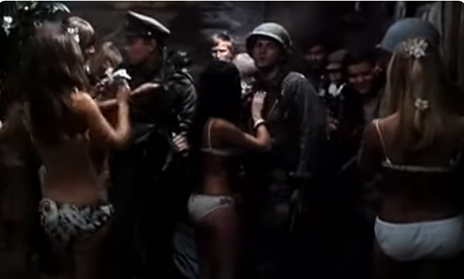
Another interesting element is that we see how everyone is coopted into this system, even those who are ostensibly against this. In neutral Sweden, those who cannot be convinced of the value of the system are used in their own way. They are kept in a kind of hippy camp to tempt the attacking team away from their purpose and lose points.
We also have a French Student who has come to provide his thoughts but does not fight. As the unnamed documentarian says “Do you not think the system is using you?”. Even though he actually makes it further than anyone else, as he learns more he elects to join the machine’s controllers.
During these sections, it should be noted, it all takes place in Swedish and French. From context and my mid-level French I believe I have understood what is happening but there is probably some more detail I have missed.
After the Guns Have Stopped
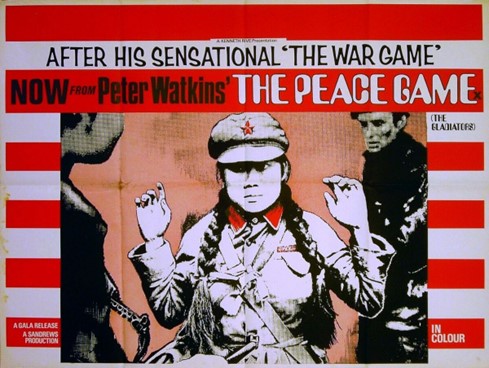
This is the best piece of SF cinema I have seen since, well, The War Game. I don’t know if this is where we are headed but it does what truly great science fiction is meant to do: Present a picture of the now through a speculation of what could be whilst still making it feel disturbingly believable.
So, watch out Doctor Who! The Peace Game Olympics may soon supplant you as the nation’s favourite Saturday evening family television show.
Five stars.


